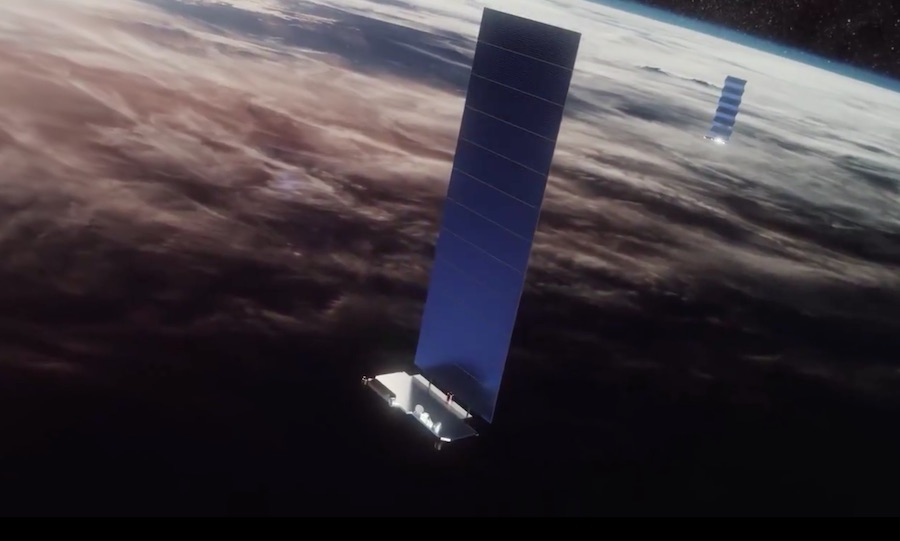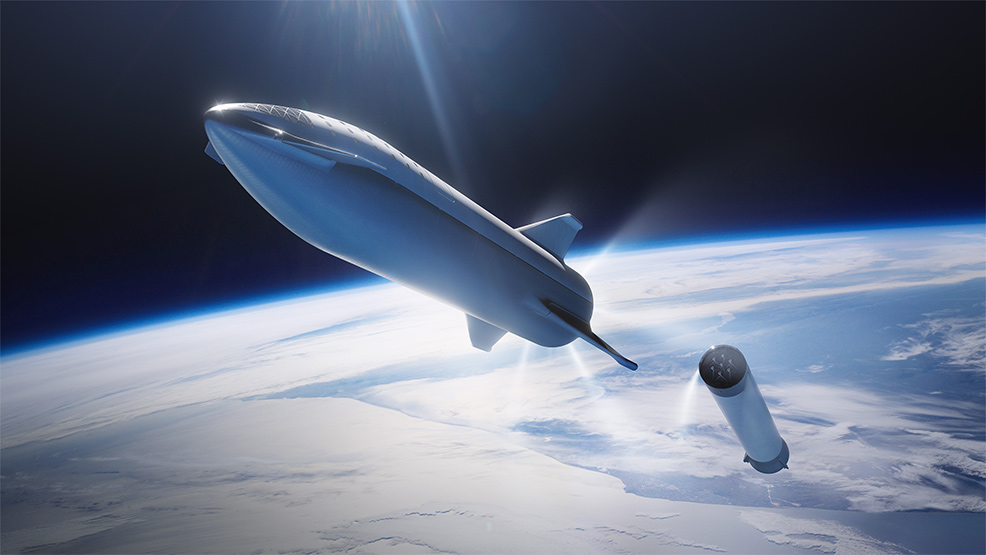
24th May 2019 SpaceX launches first 60 Starlink Internet satellites Elon Musk's space company, SpaceX, has deployed the first 60 satellites in what will eventually become a vast network providing high-speed broadband services around the globe.
Last night, at 22:30 local time (02:30 GMT), a Falcon-9 rocket blasted off from Cape Canaveral in Florida, carrying a fleet of 60 small satellites. All were successfully released into orbit, with a drop-off altitude of 440 km and onboard electric propulsion to reach their operational height of 550 km. The reusable Falcon-9 first stage then returned to Earth, landing on the "Of Course I Still Love You" droneship, stationed in the Atlantic Ocean. This marks the first stage in a vast, globe-spanning constellation of telecom satellites – or Starlinks – that could eventually number 12,000. Each weighs 227 kg and comes equipped with multiple high-throughput antennas and a solar array. The network, as a whole, will provide only "minor" coverage when 400 or so have been deployed, with "moderate" coverage requiring 800. The plan is to have 4,400 in orbit by 2024, at which point Starlink will be considered fully operational. "In a year and a half, maybe two years, if things go well, SpaceX will probably have more satellites in orbit than all other satellites combined – a majority of the satellites in orbit will be SpaceX," Musk told reporters last week. That milestone will occur after 30 launches, he explained, when 1,800 satellites will be orbiting around the Earth.
Even after its official completion, however, launches will continue into the late 2020s. In addition to 4,400 nodes in the first network, a further 7,500 are planned at lower altitude to boost capacity and reduce latency. Gigabit speeds at latencies of just 25ms will be enabled, matching the quality of traditional ground-based cable Internet services. Normally this would not be possible with satellites, but Starlink will use low-Earth orbits. In addition to faster speeds for existing users, these spacecraft will further expand the geographic range of the Internet, providing affordable coverage to every part of the world and increasing the percentage of the global population online. SpaceX has addressed concerns about the growing quantity of space junk above our planet. Importantly, Starlink satellites are capable of tracking on-orbit debris and autonomously avoiding collision. Additionally, 95% of all components in this design will quickly burn up in the Earth's atmosphere at the end of each satellite's life cycle, with future iterative designs moving to complete disintegration. Musk hopes to use revenue from Starlink to fund the development of a "Super Heavy" rocket and "Starship" reusable craft (pictured below), which are intended to carry people to the Moon, Mars and other destinations in the Solar System. "We think this is a key stepping stone on the way towards establishing a self-sustaining city on Mars and a base on the Moon," he said.
Comments »
If you enjoyed this article, please consider sharing it:
|








